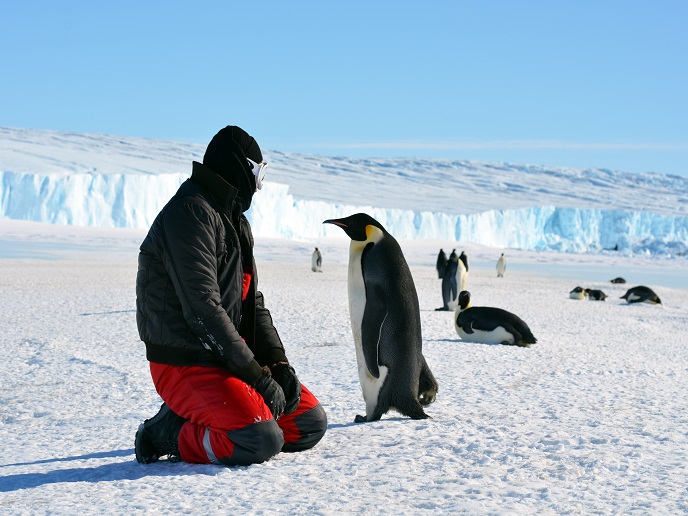How old is the oldest ice in Antarctica?
Antarctica is so cold that snowfall builds up year after year, resulting in frozen blankets of ice more than 3 km thick in places. You might think that to find the oldest ice, one simply has to dig ever deeper, to find samples at the very bottom that have been trapped for millions of years. But as Mulvaney from the British Antarctic Survey in the United Kingdom explains, this is not the case. He was part of a groundbreaking EU-funded project EPICA that recovered ice cores around 800 000 years old, and is now preparing to drill in a region about 2 850 m deep, where the ice could be 1.5 million years old. “Finding older ice than this is a bit more complicated than simply drilling deeper,” he says. “The reason for this is geothermal heat, the heat from Earth’s mantle melts away the bottom of a thick blanket of ice.” This limits the age of ice that scientists can find near the bedrock. The oldest ice recovered in Antarctica, formed around 4 million years ago, was actually found near the surface. “Imagine a layer of ice slowly flowing to the edge of the continent, and hitting a mountain range on its way,” he adds. “This would force the ice upwards, where it would eventually reappear at the surface. We call these ‘blue ice’ regions, and they can be millions of years old.” It is very hard however to achieve accurate approximations of the age of this ice. What’s more, these blue ice regions do not offer a chronological glimpse into the distant past. This is why, for scientists such as Mulvaney, age isn’t everything. “We prefer to find more stable ice flow regions that look like an upturned bowl of ice, and then drill vertically downward until we get near the bedrock,” he explains. “Here, every centimetre deeper represents a step back in time. What matters to us is obtaining the complete stratigraphic record.” This has been the focus of the EU-funded Beyond EPICA – Oldest Ice project, of which the British Antarctic Survey is a member. The project was launched in 2016 to identify and drill in regions where continuous ice cores older than 800 000 years might be found. A promising location was identified, about 40 km away from the Italian-French station, Concordia, and the EU has funded a follow-up project to establish a remote camp, and to drill and collect ice core samples. “I’ll be going back to drill for ice later this year, and we will continue for the next few short Antarctic summers until we reach the bedrock,” he says. “It’ll be a few years before we are analysing ice cores that could go back as far as 1.5 million years though.” This research is critical because it could help scientists solve a major climate riddle: why, around 1 million years ago, glacial cycles changed from occurring every 40 000 years to every 100 000 years. The air bubbles embedded in the deep ice hold a record of Earth’s atmosphere at the time, and could be crucial to solving this puzzle. “That’s the goal – to understand this early period of climate history,” remarks Mulvaney. “Why was there long-term climate change? Well-dated samples of atmospheric gases from the past are the one thing we can get from these continuous ice cores that we cannot get from other climate records.” Click here to find out more about Mulvaney’s research: Antarctic pre-drilling survey prepares for the climate lessons of ‘Oldest Ice’
Keywords
EPICA, Beyond EPICA, Antarctica, Antarctic, climate, ice, geothermal, atmospheric, glacial



